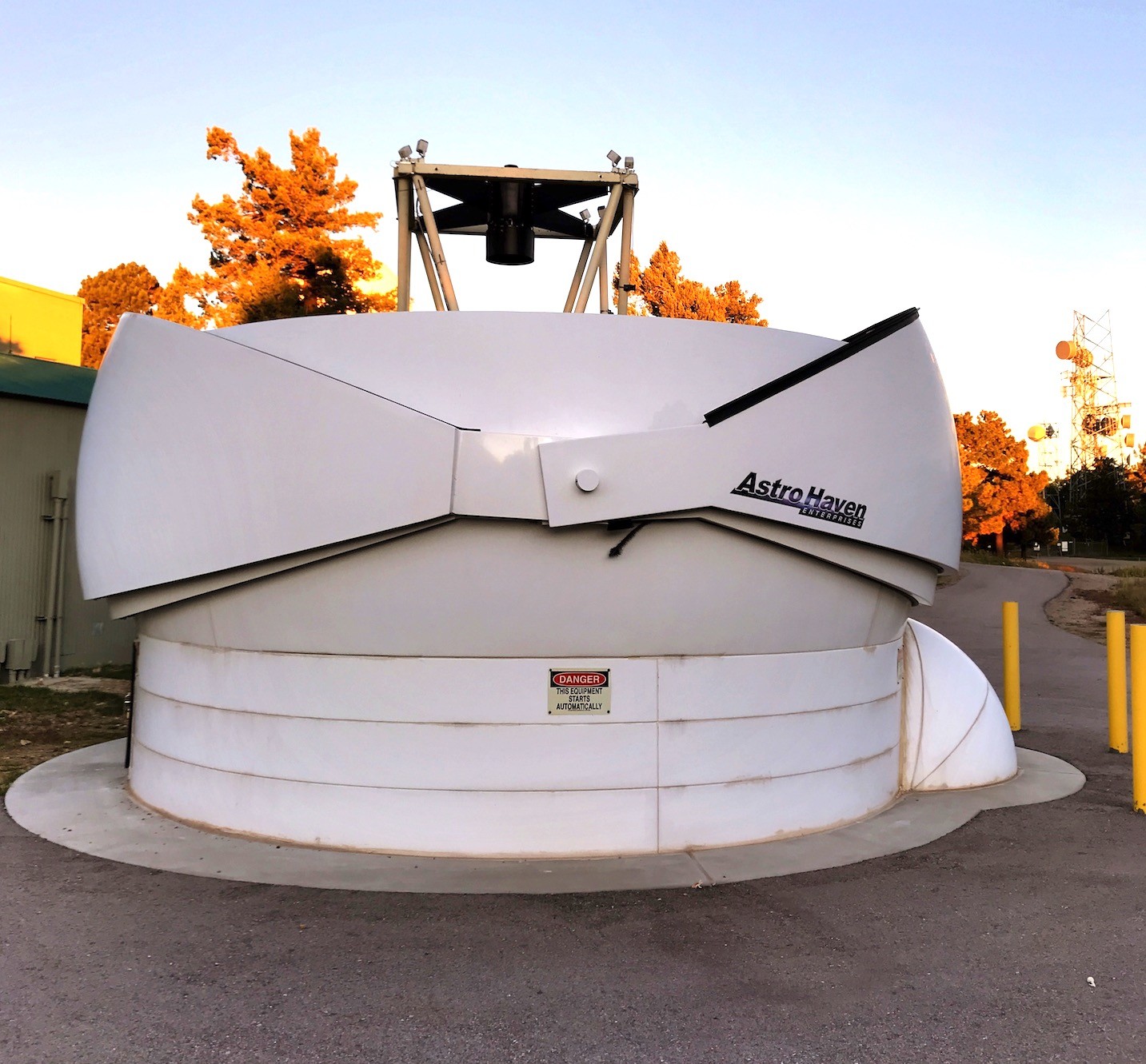The Astronomy Department has access to a large number of telescopes that are used for Research, Education, and Outreach.
Gran Telescopio Canarias
The Gran Telescopio Canarias (GTC) is the largest optical and infrared telescope in the world. Our Department of Astronomy operates the Gran Telescopio CANARIAS in partnership with Spain and Mexico through the Instituto de Astrofísica de Canarias (IAC), Instituto de Astronomía de la Universidad Nacional Autónoma de México y del Instituto Nacional de Astrofísica, Óptica y Electrónica de Puebla. The GTC represents a major research resource for the Department and data from the GTC is at the heart of a significant number of department publications and PhD theses. Further information about the GTC including highlights of recent results and a comprehensive list of mounted instrumentation can be found on the GTC observatory site.
Additional resources:
Dharma Observatory

Dharma is a 50″ cassegrain telescope located on Mt. Lemmon in Tucson, Arizona. This fully automated telescope uses a TOU echelle spectrograph and will be accessible from the UF campus.
More information about this facility is upcoming.
MINiature Exoplanet Radial Velocity Array (MINERVA)

MINERVA (Miniature Exoplanet Radial Velocity Array) is a network of small telescopes in the Northern and Southern Hemisphere dedicated to discovering and characterizing exoplanets. MINERVA-Australis, in which UF is a partner, is located in Queensland, Australia. The small size of each MINERVA telescope make the array well-suited to both radial velocity and photometric observation of planets orbiting nearby, bright stars. In particular, MINERVA-Australis will conduct follow-up observations of many of the planets uncovered by NASA’s TESS mission in its first year of operations.
Additional information about MINERVA including design and project goals, see the MINERVA Website.
Rosemary Hill Observatory

Located 30 miles from the University of Florida campus, in an isolated hilly region, Rosemary Hill is the University’s optical research observatory. Founded in 1967, it was funded by an NSF Center of Excellence grant. The 80-acre site was donated by a public-spirited citizen, Mrs. Marie Hergert. The facilities include two telescope domes, a dormitory, and utility buildings. Through the generous cooperation of Mr. Bob Cremer, then Director of the University’s Physical Plant, the infrastructure was completely renovated in 1993-4, and the interior roads were paved in 1995. Satellite photos show Rosemary Hill near the center of the largest dark area in north Florida; stars as faint as 22nd magnitude have been recorded on slow, fine-grain plates.
More information about RHO can be found here.
Campus Teaching Observatory

The Campus Teaching Observatory is a beehive of activity. On four nights each week it is used by elementary astronomy students totaling 800 per year. Smaller numbers of advanced students share the facilities, which now include nine telescopes. And every Friday night — weather permitting — the Observatory opens its doors to the public, including townspeople and students. It is estimated that more than 2,500 visitors each year enjoy these popular open houses, which are hosted by two paid assistants who operate the telescopes, answer the many questions, and display educational videos. On special occasions, such as the passage of a bright comet, an eclipse, or an opposition of a prominent planet, as many as 500 visitors have crowded the Observatory on a single night.
More information about CTO can be found here.
Dark Energy Spectroscopic Instrument

Dark Energy Spectroscopic Instrument (DESI) is a $75 M US Department of Energy-led experiment to map the expansion rate of the Universe in exquisite detail and thereby probe the properties of dark energy, a mysterious component of our Universe that seems to drive its accelerated expansion. DESI consists of a plate with 5,000 robotic optical fiber positioners to go on the Mayall 4m telescope at Kitt Peak, Arizona. With roughly 15 minute exposures, DESI will take 30 million galaxy and quasar spectra from 2019-2024 to make the largest 3-D map of the Universe ever created. This map will yield sub-percent precision constraints on the size of the Universe at a number of different points in cosmic time, each billions of years in the past. Differencing these maps will allow us to track the expansion rate of the Universe. Through Prof. Slepian’s group, UF will be involved in the analysis of DESI data.
